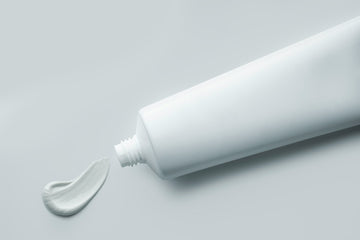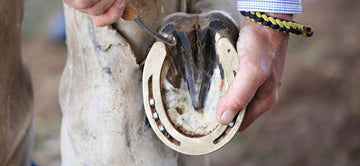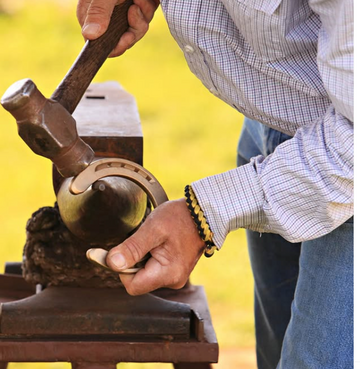Taking care of a cat’s wound is an important aspect of responsible pet ownership. Whether it’s a minor scrape, a deep cut, or an infection, treating your cat’s wounds properly can help them heal faster, reduce pain, and prevent further complications.
In this guide, we will explore the best practices for choosing the right cat ointment and providing care for your cat’s wound.
Understanding Cat Wounds
What is a Cat Wound?
A cat's wound refers to any injury that causes damage to the skin and/or underlying tissues. Wounds can vary in severity, from superficial cuts to deep lacerations.
The extent of the wound determines the level of care required and whether professional veterinary attention is necessary.
Wounds are classified into two broad categories:
-
Open Wounds: These include cuts, abrasions, punctures, and lacerations where the skin is broken, exposing the tissues underneath.
-
Closed Wounds: These are bruises or contusions where the skin remains intact, but internal tissues may be damaged.
Common Types of Cat Wounds, Including Puncture Wounds
Cat wounds can be further categorized based on their nature:
-
Lacerations: These are deep cuts that may require stitches or surgical intervention.
-
Puncture Wounds: Often caused by bites or sharp objects, puncture wounds can be deep and tricky to clean, posing a higher risk for infection.
-
Rashes: A skin irritation or allergy that causes redness and itching.
-
Hot Spots: These are areas of inflamed, irritated skin that are usually itchy and can become infected.
-
Ulcers: Open sores that can form on the skin or mucous membranes.
-
Burns: Injuries caused by heat, chemicals, or electrical sources.
-
Degloving Injuries: A severe injury where the skin is torn off the underlying tissues, often requiring surgery.
It's important to also address minor wounds in first aid, as they can be treated at home with the right products.
Wound Care Goals
When treating a cat’s wound, the main goals are to:
-
Promote healing and promote wound healing: Help the wound close and regenerate healthy tissue. Using topical ointments, creams, and wound sprays can be effective in reducing pain, inflammation, and the risk of infection. Always consult a veterinarian for the best treatment options.
-
Reduce pain and inflammation: Keep the cat comfortable during the healing process.
-
Prevent infection: Clean the wound properly and use the right ointments to keep bacteria out.
Choosing the Right Ointment
What to Look for in Cat Wound Ointments
Topical ointments are commonly used to treat wounds and can aid in promoting healing, reducing pain, and preventing infection. However, not all ointments are appropriate for use on cats, so it’s essential to select the right product.
Here are the main features to look for in a wound ointment:
-
Specifically designed for cats: Never use human ointments on your cat’s wounds, as they may contain harmful ingredients like benzocaine, which is toxic to cats.
-
Antiseptic properties: The ointment should contain antiseptic agents like chlorhexidine or iodine to kill bacteria and prevent infections.
-
Pain relief: Some ointments include soothing agents, such as lidocaine or pramoxine, to help relieve pain.
-
Non-toxic: Ensure the ointment is non-toxic in case your cat licks or ingests some of it.
What to Avoid in Wound Ointments
Certain ingredients can be dangerous for cats and should always be avoided in wound care products:
-
Tea tree oil: While it’s a natural antiseptic, tea tree oil can be toxic to cats if ingested or applied in large amounts.
-
Hydrogen peroxide: While commonly used for cleaning wounds, it can be too harsh for cats’ sensitive skin and can slow down the healing process.
-
Alcohol: Rubbing alcohol can sting and irritate a cat’s skin, causing unnecessary discomfort and delaying healing.

Caring for Your Cat’s Wound at Home
Initial Wound Care
-
Clean the Wound: Begin by cleaning the wound gently. Use a mild antiseptic solution or warm water two to three times a day to remove dirt and debris. Avoid harsh soaps, shampoos, or rubbing alcohol, as they can irritate the wound.
-
Apply Antiseptic Ointment: After cleaning, apply a thin layer of cat-safe ointment. Make sure to avoid excessive application, as it can cause the wound to stay too moist, which can lead to further infections.
-
Prevent Licking: Cats are notorious for licking their wounds. Consider using an Elizabethan collar (cone) or a wound bandage to prevent licking and ensure the ointment stays in place.
-
Monitor for Bleeding: If the wound is actively bleeding, applying direct pressure with sterile gauze is crucial to stop the bleeding. Use an absorbent dressing and raise the affected area above the heart to help reduce blood flow. If bleeding persists, seek veterinary care.
Cleaning and Dressing the Wound to Promote Wound Healing
-
Remove Crusted Discharge: Wounds can develop scabs or crusted discharge, which should be carefully cleaned away. Use a sterile saline solution to soften the crust before gently removing it with a clean cloth.
-
Gently Massage Surrounding Skin: While cleaning the wound, gently massage the surrounding skin to facilitate drainage and prevent the wound from closing prematurely.
This technique can help determine the nature of any discharge, guiding further treatment based on whether it indicates infection or is clear and thin.
-
Dress the Wound if Necessary: Depending on the wound, you may need to cover it with a sterile bandage to protect it from dirt and bacteria. Ensure the bandage is not too tight, as it may restrict blood flow.

Common Complications and Prevention
Infections
Infections are one of the most common complications when treating cat wounds. Look for signs of infection, such as:
-
Redness or swelling around the wound
-
Discharge or pus, which can be yellow or green
-
Foul odor emanating from the wound
If you suspect an infection, contact your veterinarian immediately. They may prescribe antibiotics or recommend further treatment.
Healing Time
Some wounds require more time to heal than others. Wounds located in high-movement areas, such as the legs or tail, may take longer to heal due to constant movement. In such cases, it’s essential to ensure that the wound remains clean and protected.
When Wounds Should Not Be Closed
Some wounds need to remain open to heal properly, especially if they’re large or located in areas prone to movement. In these cases, surgical removal may be required to remove dead tissue, clean the wound, and allow for proper drainage. Your veterinarian will guide you through the best treatment plan.

When to Seek Veterinary Care
Signs You Should Consult a Vet
-
Deep or Large Wounds: If the wound is deep, large, or has exposed organs, bones, or blood vessels, seek veterinary care immediately.
-
Persistent Pain or Lethargy: If your cat is exhibiting signs of pain, such as excessive crying, or becoming lethargic, it may indicate an underlying issue that requires professional treatment.
-
Infections: If you notice signs of infection, such as swelling, discharge, or increased redness, contact your vet for further advice.
-
Puncture or Bite Wounds: Puncture wounds, especially those caused by animal bites, can lead to serious infections. These should be assessed by a veterinarian as soon as possible.
Veterinary Treatment and Guidance
Following Vet’s Instructions
Your veterinarian will provide you with specific instructions for treating your cat’s wound. These may include:
-
Antibiotics or pain relievers: If an infection or pain is present, your vet may prescribe antibiotics or other medications.
-
Dressing changes: Your vet may recommend changing the bandages or reapplying ointments at specific intervals.
-
Follow-up appointments: Schedule follow-up visits to monitor the progress of the wound and ensure that it is healing properly.
Frequently Asked Questions
What Ointment Can I Put on a Cat Wound?
You should use a cat-safe antiseptic ointment designed for wound care. Chlorhexidine and hydrocortisone-based products are good options.
What Is Safe to Put on a Cat's Open Wound?
Use products specifically designed for cats, such as antiseptic ointments or saline solutions, to clean the wound. It is crucial to keep the wound edges clean by using a mild antiseptic solution or warm water to prevent contamination. Avoid using human products or harsh chemicals.
What Kind of Antibiotic Ointment is Safe for Cats?
Neosporin (without pain relief) is often considered safe in small amounts for cats, but it’s always best to consult your vet before using any ointment.
Which Medicine is Best for Cat Wounds?
Depending on the severity of the wound, antibiotics, antiseptic ointments, or wound care gels prescribed by your veterinarian are typically the best options.
Best Cat Wound Ointment for Healing Conclusion
Choosing the right ointment and following proper wound care can help promote healing and prevent infection. Always consult with your veterinarian for guidance on caring for your cat’s wound.
By working together, you can help your cat recover from their wound and get back to their normal self.










